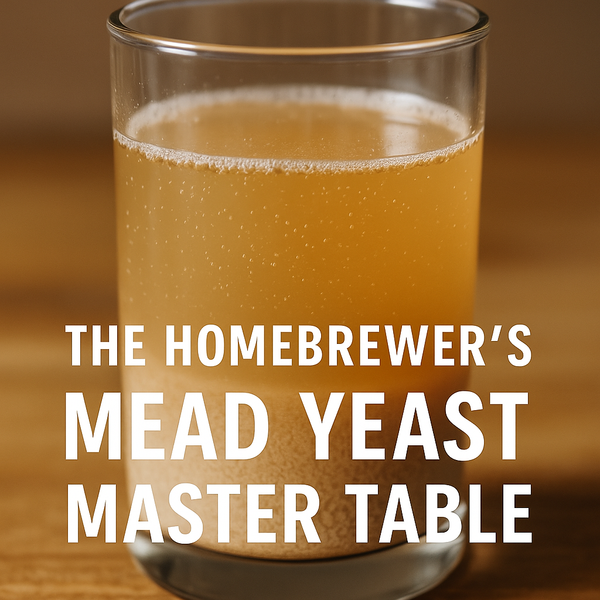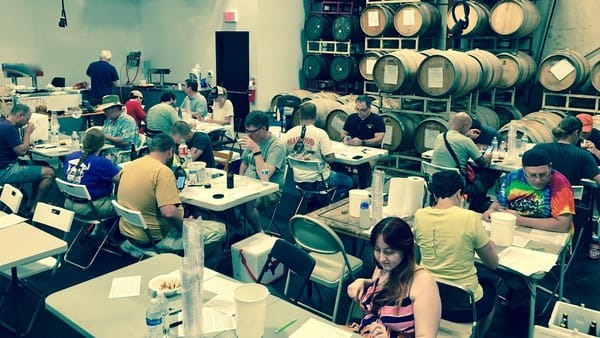Calibration Series: Temperature
From a procedural perspective, the single most important brewing issue is temperature. Temperature dictates the accuracy of most of the brewing specific measurements. It drives specific enzyme and protease activity in the mash. Heat is required to boil, and most importantly, specific temperatures for fermentation are necessary to avoid off flavors and to nuance and tweak specific desirable esters or phenols. Heat is created as fermentation occurs. Temperature is critical to making a good beer.
So, the thermometer maybe the most critical tool in your brewing arsenal.
There are different types of thermometers we may encounter in our homebrewing career, some with advantages and disadvantages.
Glass thermometers are crap for brewing. Seriously. Let me be very clear - they suck. They are delicate and apt to break even when gently treated. Even though they are thermometers, many simply cannot handle quick temperature changes. DO NOT USE THEM. You cannot salvage a wort that has broken glass, metal shot and who knows what else from the thermometer. Do yourself a solid and skip right past this choice!
Have I made my point? Oh yeah, you cannot calibrate them! Well you can note how far off they are...
Analog dial thermometers, especially those with long probes are very good for brewing. However, you get what you pay for. Look for one with a calibration screw behind the dial, and from a reputable vendor. This will allow you to get fairly accurate readings. The long probe is extremely useful for taking mash temperature readings at various levels in a mash tun. Some have little indicators that you can slide around for a target temperature.
Dial thermometers are often fitted into a kettle to provide temperature feedback. Most are fairly accurate and have calibration screws. It is very important, however, to calibrate these. I have gone through a couple to find a set of three for my system that all calibrate appropriately - and are accurate to one another.
Pros: Convenient, and fast read. Easy to read
Cons: Difficult to calibrate, may require dis-assembly from kettles or hardware for calibration.
Digital thermometers, especially those with removable probes, are even more convenient and useful, but make sure they can be calibrated. Again, your mileage may vary on the cheaper probes targeted toward BBQ or smoking. If possible, make sure the leads are water proof or resistant, although it maybe possible to DIY a water resistant solution, but that may throw off the readings. Again - calibration, calibration, calibration.
Pros: Very fast read times, durable. Multiple uses in kitchen.
Cons: Batteries, some can have very small reading indicators, water and humidity can deteriorate probes and electronics.
Thermopens seem to be the best choice for digital thermometers and many brewers swear by them. They are water proof, and extremely accurate out of the box. The probe seems a bit short, so really only useful for the top of the mash - or other temperature controlled procedures. They are a bit pricey, so look for a sale!
Calibration! Calibration! Calibration!
Always calibrate your equipment.
For thermometers, you should be fine calibrating for freezing and boiling water temperatures.
- For freezing, make a solution of ice and water, and stir vigorously. The end of the stir should show roughly half ice and half water, and your thermometer should read 32° F or 0° C. If it doesn't, you need to mark down how far up or down the scale it is from the mark. I have an analogue thermometer that reads 34 F at freezing... and I marked it such with a Sharpy.
- For boil calibration, boil some water and take that temperature with a medium boil, adjusted for your elevation. Here in Texas, water boils at 212 F - that previous thermometer reads 3 degrees high - 215 F and so I marked it. Other adjustable thermometers, I use the calibration screw or a digital calibration function to calibrate.
One thermometer type I left out - for a reason - is the infrared thermometer. There is a lot of cool cache with infrared, but the inaccuracy if not used properly defeats the coolness aspect. Example - you will find a significant measurement difference between boiling with an immersed probe and trying to read through the steam and humidity coming off the boil with infrared. It is best at reading a temperature on a solid (like the outside of a boil kettle wall), but that will not give tell you the actual temperature 2" down and to the center of a mash!
Our next discussion might be surprising!




